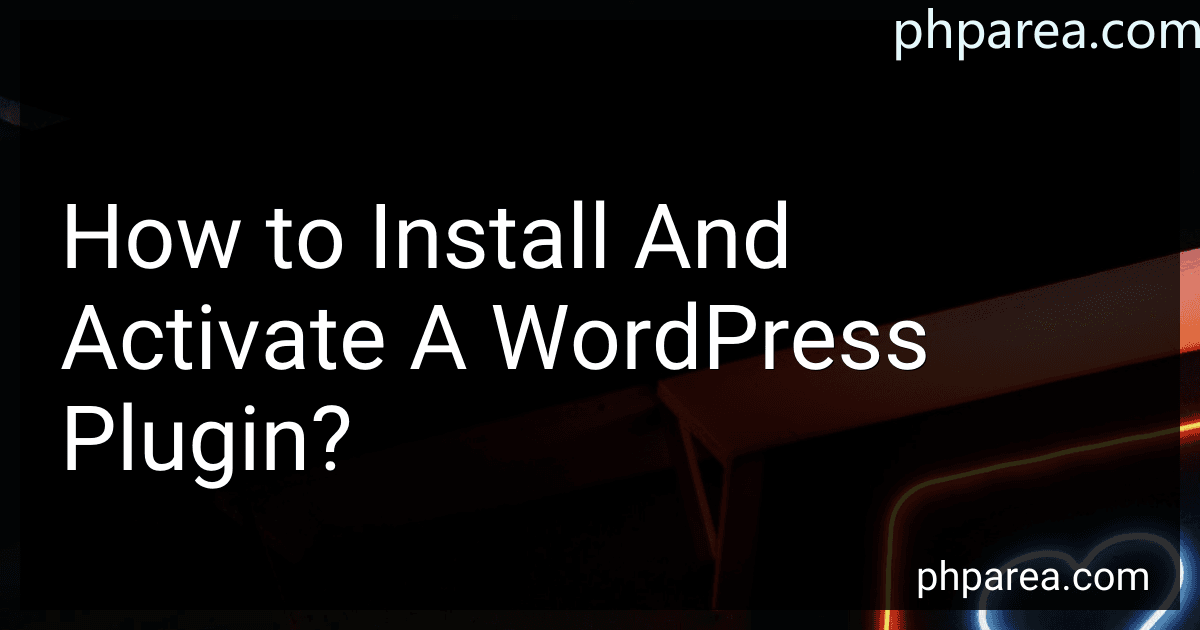Best WordPress Plugins to Buy in December 2025
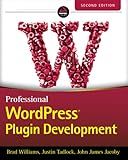
Professional WordPress Plugin Development, 2nd Edition


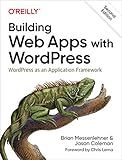
Building Web Apps with WordPress: WordPress as an Application Framework


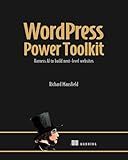
WordPress Power Toolkit: Harness AI to build next-level websites


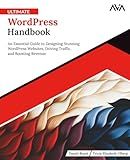
Ultimate WordPress Handbook: An Essential Guide to Designing Stunning WordPress Websites, Driving Traffic, and Boosting Revenue (English Edition)


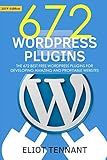
WordPress Plugins: The 672 Best Free WordPress Plugins for Developing Amazing and Profitable Websites



WordPress Plugin Development Cookbook: Create powerful plugins to extend the world's most popular CMS, 2nd Edition


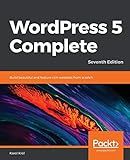
WordPress 5 Complete: Build beautiful and feature-rich websites from scratch, 7th Edition


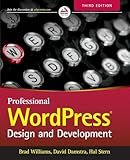
Professional WordPress: Design and Development


To install and activate a WordPress plugin, follow these steps:
- Log in to your WordPress admin panel.
- Navigate to the "Plugins" tab on the left-hand side menu.
- Click on the "Add New" button at the top of the Plugins page.
- In the search bar on the right-hand side, type the name or functionality of the plugin you want to install.
- Press the "Enter" key or click on the "Search Plugins" button.
- A list of plugins matching your search criteria will appear. Browse through the list and find the plugin you want to install.
- Once you find the desired plugin, click on the "Install Now" button next to it.
- WordPress will now download and install the plugin files on your website.
- After the installation is complete, click on the "Activate" button to activate the plugin.
- The plugin is now installed and activated on your WordPress website. You may need to configure the plugin settings to make it work according to your requirements.
It is important to note that the installation and activation process may vary slightly depending on the specific WordPress theme or version you are using. However, these general steps should guide you through the installation and activation of most WordPress plugins.
What should I consider before installing a WordPress plugin?
Before installing a WordPress plugin, there are several things you should consider:
- Compatibility: Ensure that the plugin is compatible with your version of WordPress. Check the plugin's information to confirm compatibility with your WordPress version.
- Reviews and ratings: Look for reviews and ratings of the plugin to gauge its quality. Check whether it has positive reviews, a high rating, and good user feedback.
- Support and updates: Check if the plugin is regularly updated and supported by the developer. It's best to choose a plugin that is actively maintained and receives regular updates to fix bugs and add new features.
- Number of installations: Consider the number of active installations of the plugin. A higher number usually indicates that more users trust and use the plugin, which can be a positive indicator of quality.
- Developer reputation: Research the plugin developer to gain insight into their reputation. Check if they have developed other successful plugins and if they have a good track record.
- Security: Ensure that the plugin is secure and follows best practices. Look for information about security audits, vulnerability disclosures, and the developer's commitment to keeping the plugin secure.
- Plugin functionality: Thoroughly review the plugin's features and functionality to determine if it meets your specific needs. Make sure it has all the necessary features and aligns with your goals.
- Compatibility with other plugins/themes: Check if the plugin is compatible with your current theme and other plugins you have installed. Compatibility issues can cause conflicts and affect your website's functionality.
- Performance impact: Consider the impact of the plugin on your website's performance. Plugins that are poorly coded or overload your site can slow down its loading speed.
- Cost: Determine if the plugin is free or premium. If it's a premium plugin, evaluate the cost and whether it's worth the investment based on its features and functionality.
Taking these factors into account will help you choose the right plugin for your WordPress site and avoid potential issues in the future.
How to fix broken plugins in WordPress?
To fix broken plugins in WordPress, you can follow these steps:
- Identify the issue: Determine which plugin or plugins are causing the problem. If you recently activated or updated a plugin before the issue occurred, that plugin is likely the culprit.
- Disable the broken plugin: Access your WordPress dashboard and go to "Plugins" > "Installed Plugins." Find the plugin causing the issue and click "Deactivate." This will disable the plugin, allowing you to investigate further without it interfering.
- Clear your cache: Sometimes, caching plugins or browser cache can cause conflicts. Clear the cache to ensure you are viewing the latest version of your site.
- Update the WordPress version: Ensure you are using the latest version of WordPress. An outdated version can cause compatibility issues with plugins. If an update is available, install it and check if the problem persists.
- Update plugins and themes: Outdated plugins and themes can also cause broken functionality. Go to "Plugins" > "Installed Plugins" and update any outdated plugins. Similarly, go to "Appearance" > "Themes" and update your theme if a newer version is available.
- Check for conflicts: Sometimes, two plugins may not work well together due to conflicting code or functionality. Temporarily disable all other plugins except for the one causing issues and check if the problem still exists. If not, enable the other plugins one by one until the conflict re-emerges. This will help identify the conflicting plugin.
- Roll back plugin updates: If the issue started after updating a specific plugin, you can try rolling back to a previous version. Some plugins, like WP Rollback, allow you to easily revert to older versions. This can help resolve compatibility issues.
- Contact the plugin developer: If none of the above steps resolve the issue, reach out to the plugin developer for assistance. Many plugins have support forums, email contacts, or dedicated support channels. Explain the problem you're experiencing, providing details like WordPress version, plugin version, and any error messages you've encountered.
Remember to always backup your site before making any changes to plugins or themes.
How to customize a plugin's settings in WordPress?
To customize a plugin's settings in WordPress, follow these steps:
- Login to your WordPress admin dashboard.
- Go to the "Plugins" section and click on "Installed Plugins".
- Find the plugin you want to customize the settings for and click on the "Settings" or "Configure" link below it.
- This will take you to the settings page for that plugin.
- The settings page may have different sections or tabs, depending on the plugin. Each section will have specific options to configure.
- Review the available settings and make any desired changes.
- Save the changes by clicking on the "Save" or "Update" button at the bottom of the page.
- Optionally, some plugins may have additional customization options in the WordPress Customizer (found under "Appearance" in the admin dashboard) or in the plugin's widget settings (found under "Appearance" > "Widgets").
Note: Customization options and steps may vary depending on the plugin you are using. It is always recommended to refer to the plugin's documentation or support resources for specific instructions.
How to delete or uninstall a WordPress plugin?
To delete or uninstall a WordPress plugin, you can follow these steps:
- Login to your WordPress admin dashboard.
- Go to the Plugins section on the left-hand side menu.
- Locate the plugin you want to delete or uninstall from the list of installed plugins.
- Under the plugin name, you should see two options: Deactivate and Delete. Click on Deactivate first to disable the plugin.
- After deactivating the plugin, the Delete option will appear. Click on Delete.
- WordPress will ask for confirmation before permanently deleting the plugin. Click on OK to proceed.
- The plugin will be deleted, and you will see a success message.
Note: Deleting a plugin will remove all its files and data from your WordPress site. If you plan to re-install the plugin in the future, make sure to backup any necessary settings or data before deleting it.
It's also worth mentioning that some plugins may have additional uninstall instructions provided by the developers. If the plugin has a dedicated settings page or documentation, refer to that for any specific uninstallation steps.
How to check if a plugin is slowing down my WordPress site?
To check if a plugin is slowing down your WordPress site, you can follow these steps:
- Benchmark your site's performance: Before you check the plugin's impact, it's important to establish a baseline performance measurement. You can use tools like GTmetrix, Pingdom, or Google PageSpeed Insights to measure your site's performance and load times.
- Deactivate all plugins: Temporarily deactivate all plugins on your site and then retest your site's performance. If your site becomes noticeably faster, it indicates that one or more plugins are causing slowdowns.
- Reactivate plugins one by one: Begin by reactivating the plugins one at a time and retest your site after activating each plugin. This allows you to identify the specific plugin(s) responsible for the slowdown. If you notice a significant drop in performance after activating a particular plugin, there is a good chance that it is causing the slowdown.
- Check plugin performance: If you have identified a problematic plugin, there are a few things you can do to further investigate:
- Check plugin reviews: Look for reviews and comments on the plugin's page in the WordPress Plugin Directory. Users often report performance issues or conflicts with other plugins in these reviews.
- Test plugin on a staging site: If possible, create a staging site and activate the plugin there. This allows you to test its performance without affecting your live site.
- Use a plugin performance profiler: There are plugins available, such as P3 (Plugin Performance Profiler), that can help you analyze the impact of each plugin on your site's loading time. These tools can show you the plugins consuming the most resources.
- Choose alternatives or optimize: If the plugin is indeed causing a slowdown, you have a few options:
- Look for alternative plugins that offer similar functionality but with better performance.
- Reach out to the plugin developer for support or see if there are any available updates that address performance issues.
- Optimize your site and plugin settings. Some plugins may have configurable options or settings that, when tweaked, can improve performance.
By following these steps, you can identify and address any plugins that may be slowing down your WordPress site. Remember to always keep your plugins updated and review their impact on performance periodically to maintain optimal site speed.
